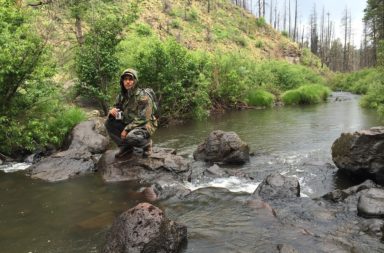Are you prepared to protect your prepper retreat from a raging inferno? What about during a SHTF scenario when you can’t call the fire department? Have you taken steps to help ensure your home is a fire proof as possible as well as the area around the structures?
If not, you are not alone. Far too many preppers neglect this essential part of prepping because they are focused on other equally and pressing survival needs – the whole beans, Bandaids, and bullets line items can definitely become expensive and overwhelming to accumulate.
Because it is highly unlikely that you will be able to call 911 during a long-term disaster, you must be prepared to take care of not only your personal protection and medical needs yourself, but do your own firefighting as well.
Brush Fire Dangers
Wildfires, or brush fires as we call them in Appalachia, can be not only the most destructive type of blazes but also the most deadly for firefighters and anyone else caught in their path.
A brush fire roaring unchecked can double in strength and dimension in under a single minute. Goofy liberal environmentalist laws against select cutting in forests and controlled burns have served to only enhance these dangers. Rural residents frequently find themselves living only a few feet to a few miles from government-owned forests and recreational land – placing them immediately in the path of a raging wildfire.
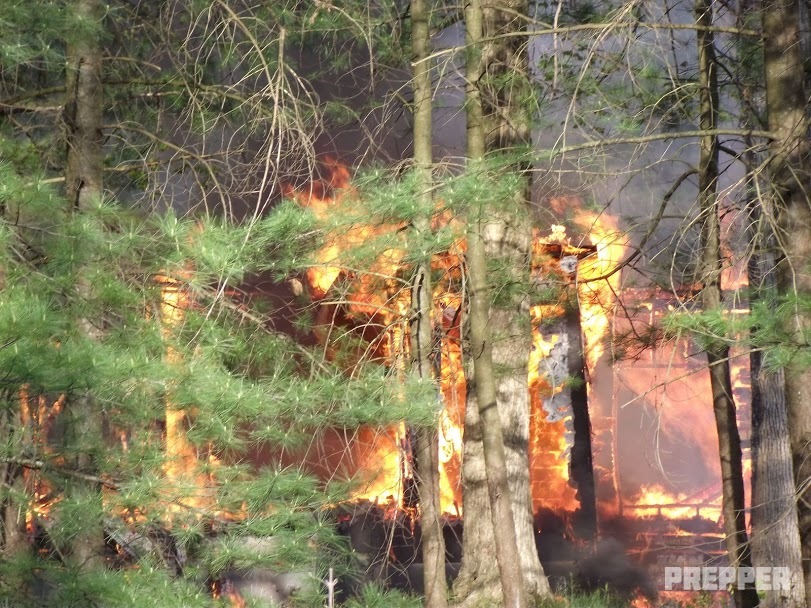 The bulk of preppers live in rural areas, which means your bugin location or survival retreat is likely situated in a wooded area – or exists right in the middle of the forest. While there are a plethora of advantages to such a setup, some significant disadvantages must be eliminated or mitigated as well. Allowing trees to exist within 50 feet of your home could allow a thriving brush fire to garner the fuel necessary to bring the flames right to your front door.
The bulk of preppers live in rural areas, which means your bugin location or survival retreat is likely situated in a wooded area – or exists right in the middle of the forest. While there are a plethora of advantages to such a setup, some significant disadvantages must be eliminated or mitigated as well. Allowing trees to exist within 50 feet of your home could allow a thriving brush fire to garner the fuel necessary to bring the flames right to your front door.
EMP And Solar Flare Dangers
If the long-term disaster you are attempting to survive stems from an earth-directed solar flare or an EMP, the chances of battling a fire on your own just multiplied substantially.
During a chat about EMP threats and preparedness with Bill Forstchen (One Second After), he noted that at any given moment there are about 7,000 airplanes in the sky over the United States of America.
Now, if an EMP or X-Class solar flare is inflicted upon us, the sensitive equipment inside every aircraft made since about World War II and possibly Air Force 1 (which has been hardened against an EMP) will suddenly stop working.
Aircraft controllers will no longer be able to guide the thousands of planes soaring without control in the sky. Airport runways will also not have lights to guide planes down, if the pilots are close enough to even attempt a controlled dissent.
Just imagine for a moment, the number and intensity of fires that will suddenly break out around the country if even a small percentage of those 7,000 or so planes simultaneously crash. As that startling mental image sinks in, now think about how quickly the jet-fueled blazes will spread when fire engines have lost the ability, and ultimately the available staff, to roll to the emergency scene and battle the flames.
Only fire departments with a vintage engine in their fleet might be able to get to the scene and have functioning pumps to help stem the raging blazes. Unfortunately, most such trucks are reserved for purely ceremonial purposes, like parades and funerals, and no longer have a functioning pump or a ladder tall enough to reach past a second story window.
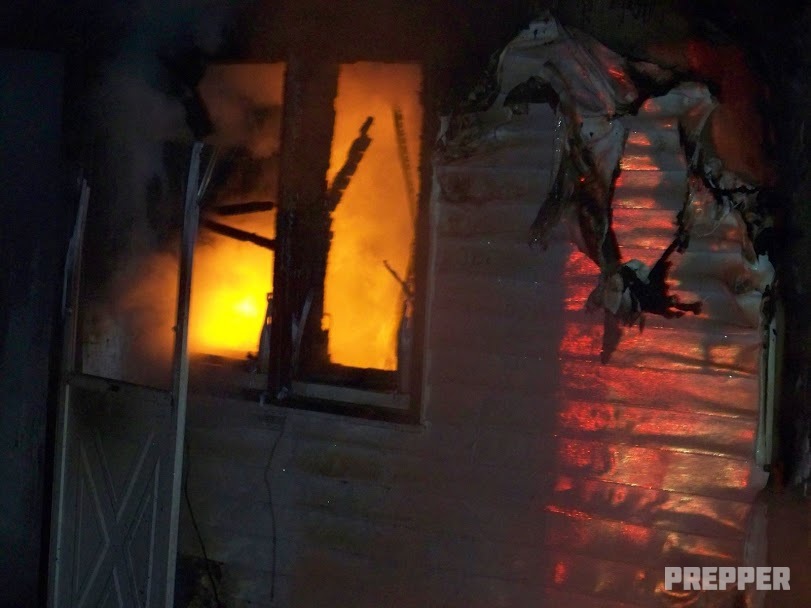 Pure Ignorance Dangers
Pure Ignorance Dangers
The unprepared will be a threat in many ways during a SHTF disaster – and fire is among them. Folks who do not have wood burning stoves or fireplaces will be forced to burn candles or kerosene or propane heaters, if they actually have them, inside to stay warm and have light in the evening – or attempt to cook using those methods.
Every single winter, without fail, my husband’s fire department is called out on a structure fire during a routine power outage, every time the electricity is out for more than an hour during the daytime. User error, unsafe positioning of the candles or portable heaters, and improper ventilation inside the home, are the primary causes of both complete losses of the structures and sometimes, the lives of the unprepared folks inside.
During a SHTF scenario, if you have unprepared neighbors their stupidity could cost you your home, barn and livestock, storage shed an all of its contents…and by extension your life.
Rarely or never before used fireplaces or those that have been converted for gas or electric use by the unprepared masses, also pose a risk to your own home. Anyone who has not maintained their fireplace and does not know how to properly clean and use one, can start a house fire almost as easily as they can be sitting a candle on a table next to a flowing curtain – you might be shocked at how often that happens.
Flammable Stockpile Dangers
Flammables are classified in three distinct categories – Class A, Class B, and Class C. Fire extinguishers, water, sand, and similar emergency fire deterrent supplies are specific to the type of flames they are being used to thwart. Spraying the wrong type of material onto a fire can fan it and make things much worse instead of putting it out.
Class A Flammables
These are common household and exterior properties items such as paper, plastic, and wood.
Class B Flammables
Grease and similar liquids that can spark or fuel fires are part of this potentially fire initiating classification.
Class C Flammables
This type of flammable material is primarily related to electrical components and fire which stem from them and spread.
Next, let’s focus on ways to protect your home from being susceptible to fire and building materials you should use to harden your full-time survival retreat, bug in or bugout location, from fire threats.
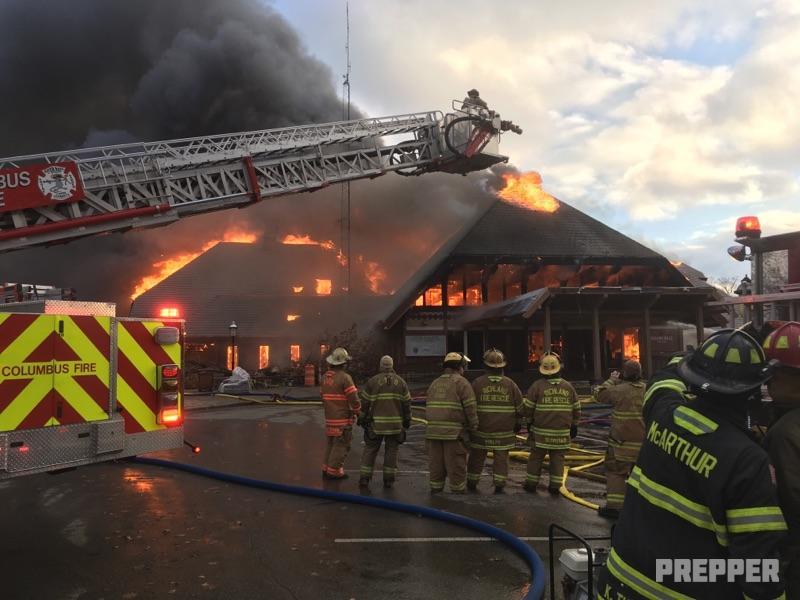
How To Protect Your Prepper Retreat From Fire Damage
The very first step in fire prepping for a SHTF event is not buying gear or even taking a beginning skills class. Conducting a thorough review of the 20 feet surrounding all structures and flammable equipment stored outdoors is where you need to begin.
Creating a fire break and removing any potential fuel for the flames near your property can help save your shelter and supplies.
Clear Trees and Branches
Cut down all trees and branches that exist within at least 10, but preferably 50 feet, from not only any structure, but around the main base of operations on the survival retreat or bug in location.
In addition to clearing trees back away from your retreat, cut all branches of trees within 100 to 200 feet away from the home to make sure none hang within 15 feet of the ground.
Clear Landscaping and Gutters
Never plant fuel next to your home. Edible landscaping is a great way to increase your crop and medicinal plant and herb yield, but keep all shrubs away from your home and structures – especially those of the pine variety because they can become brittle quickly during a hot and dry weather conditions. Remove any dry or potentially flammable debris from your gutters on a weekly basis.
Flammables Storage
Store flammable materials away from the home and barn and inside a shed or storage container completely comprised of metal. Never store gasoline, diesel, or propane tanks inside an attached garage or adjacent to any non-metal structure. Ammunition reloading supplies also should never be stored inside of the home or any structure not specifically designated for that purpose.
Hose Down Non-Metal Roofs
If you do not have a metal roof, hose down the roof using buckets of water from a creek, pond, or pool if necessary, during dry times of the year on at least a daily basis if a fire threat is present.
Hay Bale Storage
If your bug in location is also a survival homesteading retreat, you must remain vigilant when it comes to the storage of hay bales – especially large round bales. Spontaneous combustion is a real thing folks, and can cause the loss of an entire year’s worth of hay in mere minutes. Hay is basically dried grasses, making it a flammable. Square bales can be stacked together fairly safely because they are not as dense as the far larger round bales. The moisture that accumulates inside the round bales is both why they can be stacked together with a vastly reduced risk of spontaneous combustion and why they must be barn kept or covered.
Still, a years’ worth of square bales for only a few animals that is kept inside a barn will serve as fuel for any type of fire that threatens a wooden barn structure. When storing round bales, always make certain there is at least one foot of distance (preferably three) between each bale. Storing the round bales next to or inside of a barn might reduce the risk of intense sun causing them to catch on fire, but again, will turn the bales into fuel if a fire threat becomes a reality.
The vast majority of farmers and homesteaders do not keep round bales inside of a barn due to both the fire threat they can pose and because of the vast amount of space they require. Covering the bales with a tarp or constructing a lean-to off of a metal building is a far more advisable storage option if you want to keep the bales out of view and the weather. Keep in mind ruminant animals like cattle, sheep, and goats are capable of eating hay that contains a small amount of mildew, but horses, donkeys, and mules absolutely cannot.
Clear Underbrush
Cut back your woods by thinning out not only the trees in the primary base area but also by removing the underbrush. Keeping goats are a superb way to maintain a low underbrush ratio on your prepper retreat or rural bug in location. Depending upon where you live, goats should be able to nearly feed themselves all winter long on small trees, dead leaves, and underbrush.
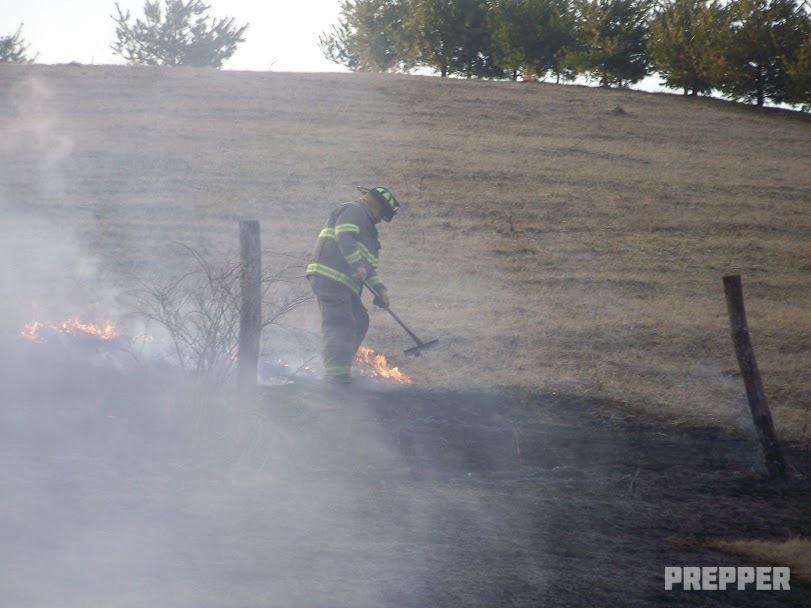
Off grid living can greatly enhance your self-reliance skill set before a long-term disaster happens. But living off the grid does create some unique fire concerns that must be addressed.
Heating the home, water, and cooking using natural gas is commonplace not only for folks living off the grid, but also for rural preppers in general. The gas tanks must be connected to the home and stored in close proximity in order to function. This is a fire threat you cannot mitigate if you want or need gas as a primary fuel.
What you must do, however, is make frequent checks to ensure the tank or tanks are in full working order, connected properly, and all lines are adequately maintained. All other flammables, including trees, shrubs, and brush, are kept far away from both connected and stored gas tanks.
Knowing how to quickly and safely disconnect and if necessary, drain and remove and unspent fuel from the gas tanks if a brush fire is raging in your direction, is equally essential.
Storing firewood near the home may be a blessing in the winter, but when conditions are ripe for a wildfire or one is heading in your direction, the woodshed or stacked logs are going to be turned into fuel as soon as the flames get close.
Store firewood inside of a metal and not a wood shed, and keep it at least 25 feet from your on grid or off the grid survival retreat to reduce the fire threat the off grid fuel poses. Wetting the wood down with a hose and buckets of water if it is not stored inside of a metal shed – after hopefully relocating the stack away from the home, is highly recommended.
Fire Preparedness Survival Training And Gear
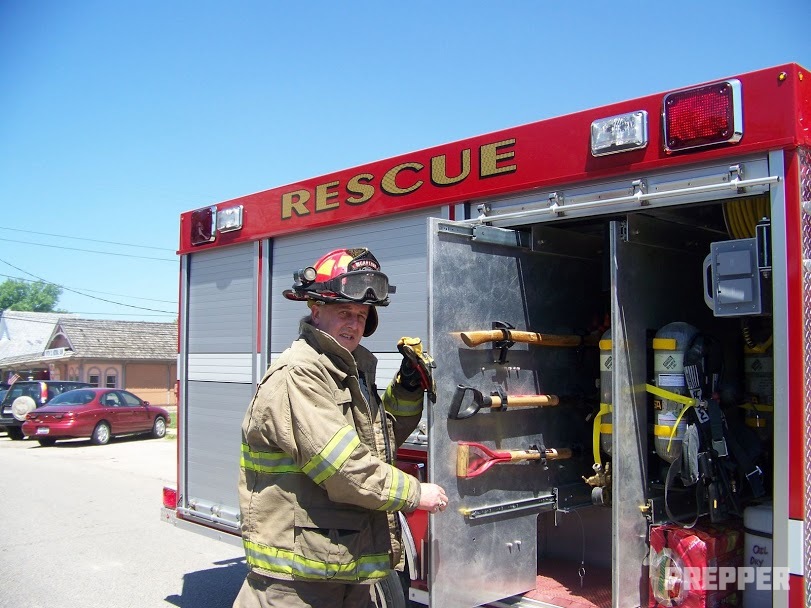 If you live in a rural area, odds are your community is served entirely or significantly by a volunteer fire department. Contrary to what many people think, volunteer firefighters must still pass the same basic 40-hour firefighting course as their paid department peers, and adhere to strict ongoing training and recertification courses as well.
If you live in a rural area, odds are your community is served entirely or significantly by a volunteer fire department. Contrary to what many people think, volunteer firefighters must still pass the same basic 40-hour firefighting course as their paid department peers, and adhere to strict ongoing training and recertification courses as well.
If you apply and are accepted as a volunteer firefighter, the vast majority (if not all) such fire departments pay for not only the required training, but the new firefighter’s gear as well. If you are a prepper who is still planning and dreaming about owning your own survival retreat, becoming a volunteer firefighter might help you achieve that goal.
The HUD Good Neighbor Next Door program offers home ownership loans up to 50 percent off the listing price to community helpers.
You can also take a single class or an entire program in fire science without joining a department, as long as you are willing to pay for the classes yourself or are granted permission to audit the classes. The basic 40-hour firefighter course will teach you how to dig a fire break, use both high-tech and manual equipment, and how to access and respond to structure, brush, and vehicle fires.
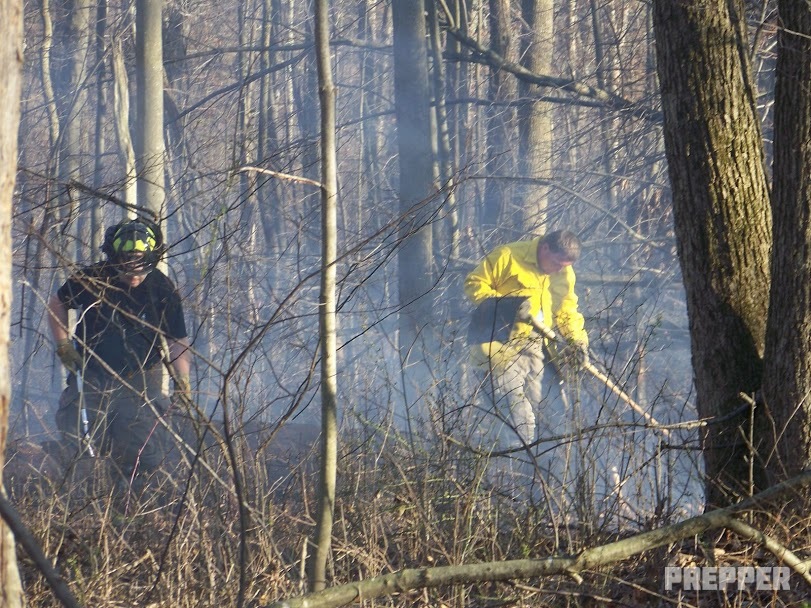 DIY Firefighting Gear And Tools
DIY Firefighting Gear And Tools
This is a Class A, B, and C fire extinguisher that is used commercially for battling chimney fires.
Baking Soda
This prepping staple is great for extinguishing grease fires.
Bunker Gear
The protective bib style pants and coat a firefighter wears will be the one of the most expensive fire gear and tools purchases you will make. If you are lucky, you can find a set of the protective gear with a little life left in it by contacting your local fire department and offering to buy old gear (after the official patches have been removed) or on Ebay.
Fire Helmet
These will be a lot harder to come by if still in usable condition, but will likely be found at the same sources as noted above.
This thin yet protective and durable hood is worn over the head and under the helmet to better protect the firefighter while battling flames.
Indian Pack
This is merely a portable water carrier that is worn on the back with a sprayer so the firefighter can hide or ride an ATV into the woods and fight wildfire over rugged terrain.
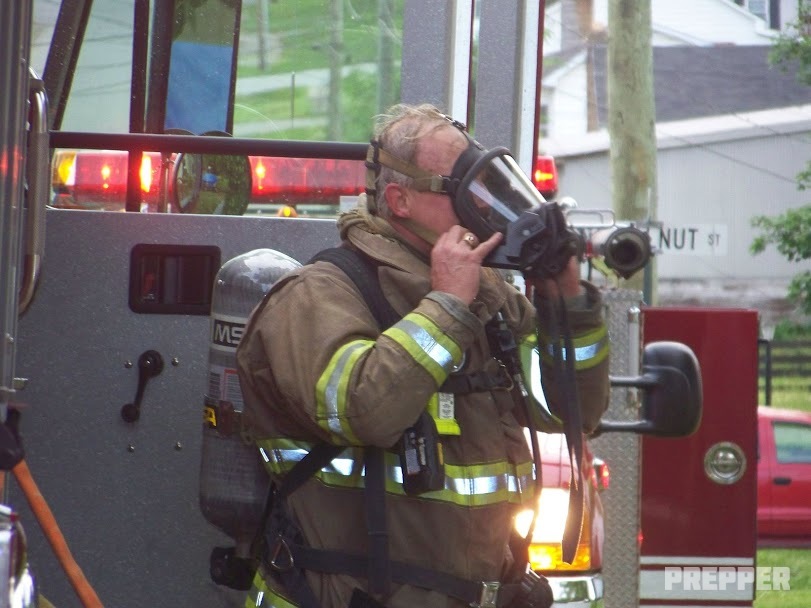
Basic Firefighter Manual Tools Checklist
- Door wedges
- Halligan Bar
- Fire Hooks – bar buster version
- Fire Hooks – square shovel with a square blade version
- Fire Hooks – Both a downtown and bicoastal hook variety
- Wall Breaching Tool
- Forcible Entry Tool
- Axe
- Sledge Hammer
- Pike Pole
- Glass Breaking Tool
- Battering Ram
- Cable Cutters
- Scoop Shovel
Fire Survival Building Materials
What you choose to build your home, barn, and outbuildings out of matters…a lot. Log cabins are popular housing choice both among preppers and rural residents in general, but they are far too highly flammable to be a sustainable building material choice.
Opt instead for poured concrete walls or cinder block walls. You can always use conventional siding or wood planks for aesthetic and OPSEC reasons – or apply stucco over the concrete to dress it up a bit.
Homes made out of sheet metal or pole barn style dwellings also offer fire protection, but not being as thick as poured concrete walls or cinder blocks, they will be more difficult and expensive to insulate properly and will offer little to no protection against even small caliber arms.
Using a poured concrete foundation and metal roofing for the home and outbuildings will also further protect it from potential wildfire – or intentional fire damage.
If you are already living at your bug in location or prepper retreat, to enhance your chances of surviving the fires that could rage during a long-term disaster, work towards retrofitting your conventional dwelling or log cabin to better harden it against natural or man-made fire threats.
Conclusion
Whether you are already living off grid or simply want to harden your preparations for a long-term SHTF scenario, you can’t always count on the local fire department. Taking the steps above to make your retreat as fire resistant as possible isn’t just good common sense, it could significantly reduce property damage and most importantly, save your life.


